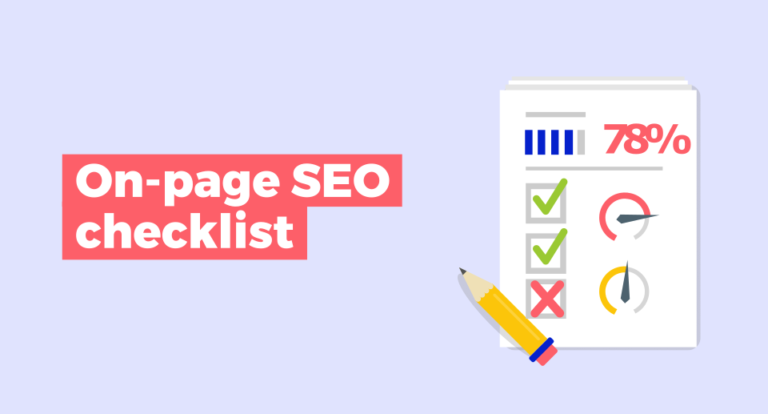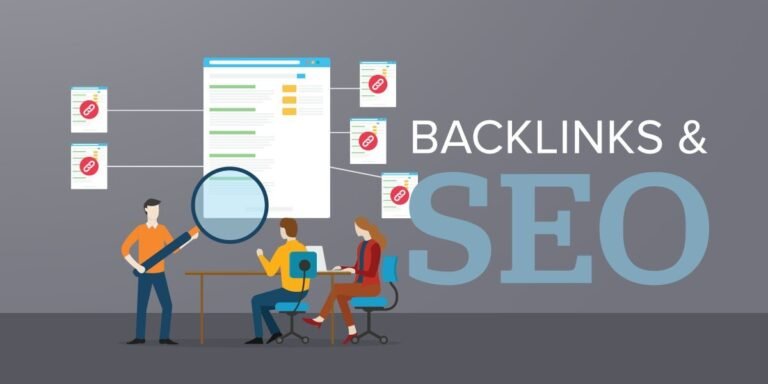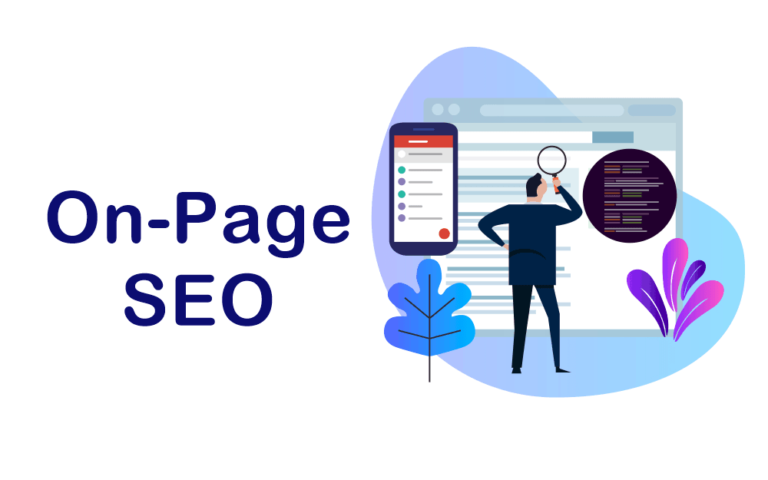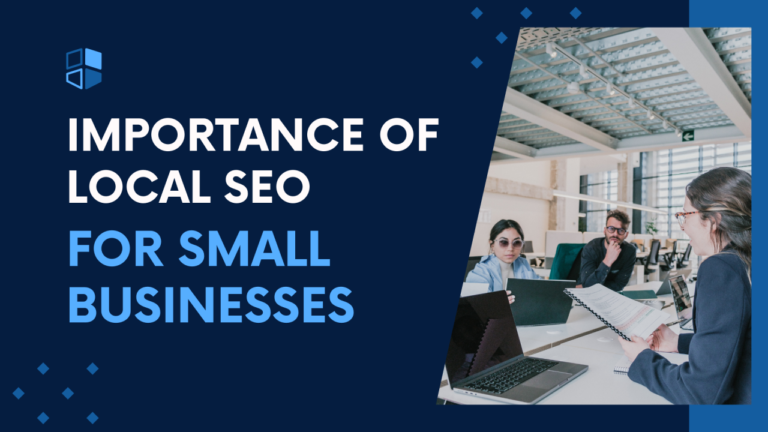Local SEO Ranking Factors You Need to Know
In today’s digital age, if your business isn’t showing up in local search results, you’re missing out on a massive chunk of potential customers. Local SEO is crucial for businesses aiming to attract customers in their immediate vicinity. Whether you’re running a cozy café, a bustling retail store, or a professional service, mastering local SEO can significantly boost your visibility and draw in more foot traffic.
But what exactly is local SEO? In simple terms, local SEO is a subset of search engine optimization (SEO) that helps businesses promote their products and services to local customers at the exact time they’re looking for them online. It involves various strategies and tactics that help your business rank higher in local search results on Google.

So, why is local SEO important? Here are a few key reasons:
- Increased Online Visibility: Local SEO helps your business appear in search results when potential customers are searching for services you offer in your area. This increased visibility can lead to more website visits, phone calls, and in-store visits.
- Targeted Traffic: By optimizing for local search, you attract highly targeted traffic. These are people who are actively looking for services like yours in your specific location, making them more likely to convert into customers.
- Building Trust and Credibility: High local search rankings signal to potential customers that your business is reputable and trustworthy. Positive reviews, consistent business information, and high-quality local content all contribute to building this trust.
- Competitive Edge: Many local businesses are still not fully optimized for local SEO. By investing in local SEO, you can gain a competitive advantage and capture market share before others catch up.
Now that we understand the importance of local SEO, let’s dive into the key local SEO ranking factors you need to know to enhance your business’s online presence. We’ll explore how to optimize your Google My Business listing, the role of online reviews, the significance of local keywords, and much more.
1. Google My Business
Google My Business (GMB) is a powerful tool that plays a pivotal role in local SEO. It’s essentially your business’s gateway to appearing in local search results and Google Maps, making it easier for potential customers to find you. A well-optimized GMB profile not only boosts your visibility but also provides essential information about your business, such as location, hours of operation, and customer reviews.
This directly impacts your local search ranking, as Google prioritizes businesses with complete and accurate profiles. Moreover, GMB allows you to engage with customers through posts, updates, and direct messaging, enhancing your online presence and building trust with your audience. In short, GMB is a cornerstone of local SEO, driving more foot traffic and online interactions.
Setting Up Google My Business
Setting up and optimizing your Google My Business profile is straightforward but requires attention to detail:

- Claim Your Business: If your business is already listed, claim it. If not, create a new listing.
- Complete Your Profile: Fill out all the necessary information such as business name, address, phone number, website, and business hours. Ensure consistency with your NAP (Name, Address, Phone number) across all platforms.
- Choose the Right Categories: Select relevant categories that best describe your business.
- Add Photos and Videos: High-quality images and videos of your business, products, and services can attract more customers.
- Verify Your Listing: Google requires verification to ensure your business is legitimate. Follow the verification process, which may involve receiving a postcard at your business address.
Managing Reviews on Google My Business
Managing reviews on GMB is crucial for maintaining a positive online reputation. Reviews influence potential customers and Google’s ranking algorithms:
- Encourage Reviews: Ask satisfied customers to leave positive reviews. Provide excellent service to naturally garner good feedback.
- Respond to Reviews: Engage with customers by responding to both positive and negative reviews. Thank customers for positive feedback and address any issues raised in negative reviews professionally and promptly.
- Monitor Reviews Regularly: Keep an eye on new reviews and respond in a timely manner. This shows potential customers that you value their feedback and are committed to excellent service.

By effectively managing your GMB profile and reviews, you can enhance your local SEO performance, attract more customers, and build a strong online reputation.
2. On-Page Signals
On-page SEO is a critical component of local SEO, as it directly influences how search engines interpret and rank your website. Key on-page elements that impact local rankings include title tags, meta descriptions, and NAP consistency. Optimizing these elements helps search engines understand the relevance of your website to local searches and improves your visibility in local search results.
Title Tags and Meta Descriptions
Title tags and meta descriptions are essential for both SEO and user experience. They provide a brief summary of your webpage’s content and are often the first things users see in search results.

- Title Tags:
- Incorporate Local Keywords: Include relevant local keywords in your title tags. For example, “Best Coffee Shop in Sacramento” is more effective than “Best Coffee Shop.”
- Keep It Concise: Aim for 50-60 characters. Ensure it’s descriptive yet concise.
- Unique for Each Page: Each page should have a unique title tag to avoid duplication and confusion.
- Meta Descriptions:
- Include a Call to Action: Encourage clicks with a compelling call to action, like “Visit us today for the best coffee in Sacramento!”
- Highlight Unique Selling Points: Mention what makes your business stand out locally.
- Keep It Within 150-160 Characters: This ensures it’s fully displayed in search results.
NAP Consistency
NAP (Name, Address, and Phone number) consistency is crucial for local SEO. Inconsistent NAP information can confuse search engines and users, leading to lower rankings and trust issues.

- Uniform Information: Ensure your business name, address, and phone number are consistent across all online platforms, including your website, GMB, social media profiles, and local directories.
- Schema Markup: Use schema markup to provide search engines with structured data about your business. This helps them better understand your business details and improves your chances of appearing in local search results.
- Regular Updates: Regularly check and update your NAP information to ensure it remains accurate, especially if you change locations or phone numbers.
3. Online Reviews
Online reviews are a powerful factor in local SEO. They not only influence potential customers but also signal to search engines that your business is trustworthy and relevant. Positive reviews can boost your local rankings, increase click-through rates, and enhance your reputation. On the other hand, negative reviews can harm your rankings and deter potential customers. Effective management of online reviews is essential for maintaining a positive image and improving your local SEO performance.

Encouraging Customer Reviews
Strategies for encouraging customers to leave positive reviews include:
- Ask for Reviews: After a successful transaction or service, politely ask customers to leave a review. This can be done in person, through email follow-ups, or via your website.
- Make It Easy: Provide clear instructions on how to leave a review. Include direct links to your review profiles on Google My Business, Yelp, and other relevant platforms.
- Incentivize Reviews: Offer incentives such as discounts or loyalty points for customers who leave reviews. Ensure these incentives comply with the review platform’s policies.
- Highlight the Importance: Explain to customers how their feedback helps improve your services and assists other customers in making informed decisions.
Responding to Reviews
Responding to reviews is crucial for demonstrating that you value customer feedback and are committed to improving your business:
- Positive Reviews:
- Express Gratitude: Thank customers for their positive feedback and support. Personalized responses can leave a lasting impression.
- Highlight Key Points: Reinforce the positive aspects mentioned in the review, showcasing your strengths to potential customers.
- Negative Reviews:
- Stay Professional: Maintain a professional and courteous tone. Avoid getting defensive or confrontational.
- Address Concerns: Acknowledge the issue raised and provide a solution or explain the steps you’re taking to address it. Invite the customer to discuss the matter further offline if needed.
- Learn and Improve: Use negative feedback as an opportunity to identify areas for improvement in your business.
4. Backlink Profile
Backlinks are crucial for local SEO as they act as votes of confidence from other websites. High-quality backlinks signal to search engines that your website is authoritative and relevant, boosting your local search rankings. A strong backlink profile not only enhances your visibility but also drives referral traffic from local sources. Building a robust local backlink profile requires strategic efforts to earn links from reputable local websites, directories, and organizations.

Earning Local Backlinks
Techniques for earning high-quality local backlinks include:
- Local Partnerships: Collaborate with local businesses, organizations, and influencers to create content or host events. These partnerships can lead to natural backlinks from their websites.
- Local Directories: Submit your business information to reputable local directories such as Yelp, Yellow Pages, and industry-specific directories. Ensure your NAP information is consistent across all listings.
- Content Creation: Produce high-quality, locally relevant content such as blog posts, guides, and infographics. Share this content with local news sites, blogs, and community websites to earn backlinks.
- Community Involvement: Participate in local events, sponsor community activities, or engage in local charities. These actions often result in backlinks from event websites, local news outlets, and other community platforms.
Analyzing Competitor Backlinks
Using competitor backlink analysis to improve your own profile involves:
- Identify Competitors: Determine who your local competitors are, especially those ranking higher in local search results.
- Use SEO Tools: Utilize tools like Ahrefs, Moz, or SEMrush to analyze your competitors’ backlink profiles. These tools can provide insights into the quantity and quality of their backlinks.
- Find Link Opportunities: Identify websites linking to your competitors but not to you. Reach out to these sites with compelling reasons why they should link to your content or business.
- Emulate Successful Strategies: Observe the types of content and strategies that are earning your competitors backlinks. Create similar or improved content to attract links from the same or similar sources.
5. Online Citations
Citations are online references to your business’s name, address, and phone number (NAP) on various websites and directories. They play a significant role in local SEO by helping search engines verify the legitimacy and location of your business. Accurate citations boost your local search rankings, improve visibility, and enhance trust with potential customers. Inconsistent or incorrect citations, on the other hand, can confuse search engines and users, leading to lower rankings and a poor user experience. Ensuring the accuracy and consistency of your citations across all platforms is essential for effective local SEO.
Building Citations
To build citations on relevant local directories, follow these steps:
- Identify Key Directories: Focus on well-known local directories like Yelp, Yellow Pages, and industry-specific directories relevant to your business.
- Submit Accurate Information: Ensure your NAP information is accurate and matches exactly across all directories. Include additional details like business hours, website URL, and a brief description of your services.
- Leverage Google My Business: Apart from directories, ensure your Google My Business profile is fully optimized and up-to-date.
- Local Chambers and Associations: Join local chambers of commerce and business associations, as they often provide directory listings and backlinks.
- Regularly Update Listings: Periodically review and update your listings to ensure all information remains current and accurate, especially after any changes in your business details.

Checking Citation Consistency
To maintain citation consistency, utilize the following tools and methods:

- Manual Checks: Regularly search for your business on major directories and review the NAP information to ensure it matches across all platforms.
- SEO Tools: Use tools like Moz Local, BrightLocal, or Yext to automate the process of finding and correcting inconsistent citations. These tools scan numerous directories and provide reports on inconsistencies.
- Google Search: Perform a Google search of your business name and review the listings that appear. Ensure that the NAP information is consistent and correct.
- Update Centralized Data: If you change your business address, phone number, or other key information, update it first on your Google My Business profile and website, then proceed to update all other citations.
- Monitor Regularly: Schedule regular checks, perhaps quarterly, to ensure ongoing consistency. This proactive approach helps maintain your business’s credibility and local SEO performance.
6. Proximity to Searcher’s Location
Proximity, or the physical distance between the searcher and your business location, is a critical factor in local search rankings. When someone performs a local search query, such as “coffee shop near me,” search engines prioritize results that are geographically close to the searcher. This means that even if your business has excellent SEO practices, a competitor closer to the searcher’s location might rank higher in the local search results. Proximity is particularly important for mobile searches, as users often look for immediate, nearby options.
The impact of proximity can be seen in Google’s Local Pack and Maps results, where businesses closest to the searcher are more likely to appear. This makes it essential for local businesses to understand how proximity influences their visibility and to implement strategies to optimize for it.

Optimizing for Proximity
Strategies to optimize for searcher’s proximity include:
- Optimize Google My Business Profile: Ensure your GMB profile is complete and accurate, with up-to-date address information. Regularly update your business hours and other relevant details.
- Localized Content: Create content that highlights your local presence. Include local landmarks, neighborhood names, and other geographical indicators in your website content and blog posts.
- Encourage Local Reviews: Encourage customers to leave reviews on your GMB profile. High-quality reviews from local patrons can boost your relevance in local searches.
- Use Local Keywords: Incorporate local keywords into your on-page SEO strategy. Use phrases like “near me” and specific neighborhood names in your title tags, meta descriptions, and content.
- Mobile Optimization: Ensure your website is mobile-friendly. Most local searches are conducted on mobile devices, and a seamless mobile experience can improve your chances of appearing in local search results.
- Location Pages: If your business has multiple locations, create separate location pages for each one. Include detailed information about each location, such as address, phone number, business hours, and localized content.
- Local Backlinks and Citations: Obtain backlinks from local websites and ensure your business is listed in local directories. These signals help search engines recognize your business’s relevance to local searches.
7. Behavioral Signals
Behavioral signals refer to the actions users take when interacting with search results and your website. These signals provide search engines with insights into how users perceive and engage with your site, influencing your local SEO rankings. Key behavioral signals include click-through rates (CTR), dwell time, bounce rate, and mobile usability. Positive behavioral signals indicate that users find your content relevant and valuable, which can boost your local search rankings. Conversely, negative signals can harm your visibility in search results. Understanding and optimizing these signals is crucial for improving your local SEO performance.
Click-Through Rates
Click-through rate (CTR) is the percentage of users who click on your website link after seeing it in search results. A higher CTR indicates that your listing is appealing and relevant to users.
- Optimize Titles and Meta Descriptions: Craft compelling and descriptive title tags and meta descriptions that include local keywords. These elements should entice users to click on your listing.
- Local Keywords: Incorporate local keywords into your titles and descriptions to attract users searching for local services.
- Rich Snippets: Use structured data markup to enhance your search listings with rich snippets, such as star ratings and business hours. These can make your listing stand out and increase CTR.
- Relevant Content: Ensure that the content on your page matches the intent of the search query. Providing relevant and valuable information can lead to higher CTRs.

Mobile Usability
Mobile usability is critical as a significant portion of local searches are conducted on mobile devices. A mobile-friendly website enhances user experience and sends positive behavioral signals to search engines.
- Responsive Design: Ensure your website has a responsive design that adapts to various screen sizes and devices. This improves accessibility and usability for mobile users.
- Fast Loading Speed: Optimize your website for fast loading times on mobile devices. Slow-loading pages can lead to high bounce rates and negative user experiences.
- Easy Navigation: Simplify navigation on your mobile site. Use clear menus, easy-to-click buttons, and a straightforward layout to help users find information quickly.
- Mobile-Friendly Content: Format your content for mobile readability. Use short paragraphs, bullet points, and larger fonts to make your content easy to read on smaller screens.

8. Local Landing Pages
Local landing pages are crucial for targeting specific geographic areas and improving your local SEO. These pages are designed to provide information relevant to a particular location, making it easier for search engines to understand your business’s geographic relevance. Optimized local landing pages can help you rank higher in local search results, attract local customers, and provide a personalized user experience. By creating and optimizing local landing pages, you can effectively target and capture traffic from different regions, enhancing your overall visibility and engagement.

Creating Localized Content
Tips for creating content tailored to local audiences include:
- Use Local Keywords: Incorporate local keywords and phrases that people in the area are likely to use. For example, instead of “best pizza,” use “best pizza in Sacramento.”
- Highlight Local Events and News: Create content around local events, news, and community happenings. This not only engages local audiences but also signals to search engines that your content is locally relevant.
- Customer Stories and Testimonials: Feature stories and testimonials from local customers. This adds authenticity and resonates with your local audience.
- Local Offers and Promotions: Promote location-specific offers, discounts, and promotions. Tailor your content to highlight what makes your business unique in that area.
- Engage with the Community: Write about your business’s involvement in local community activities, sponsorships, or partnerships. This helps build a connection with the local audience.
Structuring Local Landing Pages
Best practices for structuring local landing pages include:
- Clear and Relevant Headings: Use clear headings that include local keywords. For example, “Best Coffee Shop in Downtown Sacramento.”
- NAP Information: Ensure your business’s Name, Address, and Phone number (NAP) are prominently displayed and consistent with other listings.
- Location Map: Embed a Google Map of your business location to help users find you easily.
- Contact Information: Include contact information and a local phone number that customers can easily call.
- Local Schema Markup: Use schema markup to provide search engines with detailed information about your business, including address, phone number, and business hours.
- High-Quality Images: Use high-quality images of your business, products, or services. Including photos of your storefront, local landmarks, and community events can make your page more engaging.
- Fast Loading Speed: Optimize your page for fast loading times, especially on mobile devices. A slow-loading page can negatively impact user experience and rankings.
- Calls to Action: Include clear calls to action that encourage users to take the next step, such as “Visit Us Today,” “Call Now,” or “Get Directions.”
9. Local Content Marketing
Content marketing plays a pivotal role in local SEO by creating valuable, relevant, and consistent content tailored to a local audience. This approach not only attracts and engages local users but also signals to search engines that your business is active and relevant in its community. Effective local content marketing can enhance your visibility in local search results, drive more organic traffic, and build stronger connections with your local audience. By integrating local keywords, addressing local interests, and showcasing your involvement in the community, you can boost your local SEO performance and establish your business as a local authority.

Blogging for Local Audience
Strategies for blogging with a local focus include:
- Local Keywords: Use local keywords naturally within your blog posts. This helps search engines understand the geographic relevance of your content.
- Highlight Local Interests: Write about topics that resonate with your local audience, such as local trends, community issues, and popular events.
- Customer Stories: Share success stories and testimonials from local customers. This builds trust and connects with your audience on a personal level.
- Local Guides: Create guides or “best of” lists that highlight local attractions, businesses, or activities. For example, “Top 10 Coffee Shops in Sacramento.”
- Interview Local Experts: Conduct interviews with local influencers, business owners, or community leaders. This not only provides valuable content but also fosters relationships within the community.
- User-Generated Content: Encourage local customers to contribute content, such as reviews, photos, or stories, and feature them on your blog.
Using Local Events and News
Leveraging local events and news in your content marketing strategy can significantly boost engagement and local SEO:
- Event Coverage: Write blog posts covering local events, festivals, and community activities. Include photos, videos, and personal insights to make your coverage more engaging.
- Local News: Stay updated with local news and incorporate relevant topics into your content. This keeps your content timely and relevant.
- Event Participation: Share your business’s involvement in local events, such as sponsorships, charity work, or participation in local fairs. Highlight how your business supports the community.
- Promote Upcoming Events: Create content that promotes upcoming local events, and provide useful information, such as schedules, locations, and what to expect.
- Collaborate with Local Media: Partner with local newspapers, radio stations, or bloggers to promote events and share news. This can help you reach a wider local audience.
- Seasonal Content: Tailor your content to local seasons and holidays. For instance, create special promotions or content for local festivals, holidays, or seasonal changes.
Conclusion
Local SEO is essential for businesses aiming to attract local customers and increase their visibility in local search results. By understanding and optimizing the key local SEO ranking factors, businesses can improve their online presence, drive more traffic, and ultimately boost sales and customer engagement.
Recap of Key Points
- Google My Business: Essential for local visibility; ensure your profile is complete and manage reviews effectively.
- On-Page Signals: Optimize title tags, meta descriptions, and maintain NAP consistency to improve local rankings.
- Online Reviews: Encourage and manage reviews to enhance reputation and influence local search results.
- Backlink Profile: Build high-quality local backlinks and analyze competitor backlinks to improve your profile.
- Online Citations: Ensure accurate and consistent citations across local directories.
- Proximity to Searcher’s Location: Optimize for proximity by focusing on local keywords and mobile usability.
- Behavioral Signals: Improve click-through rates and mobile usability to send positive signals to search engines.
- Local Landing Pages: Create and optimize local landing pages with localized content and structured information.
- Local Content Marketing: Use blogs and local events/news to create engaging content for your local audience.

Next Steps for Local SEO
- Claim and Optimize Your Google My Business Profile: Ensure your GMB profile is accurate and fully optimized.
- Audit and Update On-Page SEO: Focus on local keywords, title tags, and meta descriptions.
- Encourage and Manage Online Reviews: Actively seek customer reviews and respond to them.
- Build and Monitor Citations: Ensure your business information is consistent across all directories.
- Focus on Local Content: Create content that resonates with your local audience and highlights local events.
- Improve Mobile Usability: Ensure your website is mobile-friendly and fast-loading.
- Analyze Competitors: Study your competitors’ strategies and adapt them to your business.
Share This Article
If you found this article helpful, please share it on social media to help other local businesses improve their SEO!
Related Posts
- How to Do Local SEO: Step-by-step guide to mastering local SEO.
- Local SEO for Small Businesses: Tips and strategies tailored for small businesses.
- SEO Audit Services – Are They Worth It?: Explore the benefits and value of SEO audit services.
- Budget SEO & Low-Cost SEO Services – Read This First: Learn about affordable SEO services and what to look for.
- Stock Images and SEO: Understand the impact of using stock images on your SEO efforts.
By following these actionable steps and leveraging the resources in our related posts, you can significantly improve your local SEO and grow your business.







